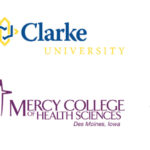Erase from your mind the image of a heroin addict: a skinny hippie shooting up in some back alley in a big city. Imagine instead a college-age student in his or her bedroom, or the home of a friend, shooting heroin into his or her veins. This could be your child, grandchild, niece or nephew, or sibling.
Heroin overdose claimed the lives of 10,574 people in 2014 and its victims were among the 47,055 deaths related to lethal drug overdoses in that year. Drug overdose is the leading cause of accidental death in the U.S. (http://tinyurl.com/h84ssp5). It’s time to raise our awareness about heroin addiction specifically and drug addiction in general, and what we can do to alleviate this crisis.
We’re focusing on heroin because more and more young people are getting addicted to it. Bettendorf Police Detective Josh Paul said his department realized a couple of years ago that heroin overdose was becoming a serious problem. He recalls three or four overdose deaths in the last year; all of the victims were under 30 years old. At One Eighty, a Davenport-based Christian organization that reaches out to people in crisis, poverty and addiction, one in every three applicants is using heroin, founder Rusty Boruff said.
Heroin is cheaper than prescription pain killers sold illegally on the street, but users pay a heavy price in harm to their bodies for the fleeting sense of euphoria they get from using the drug. Users may end up in jail or prison because of crimes committed to pay for heroin. Withdrawal is hellish; its users become extremely ill. Overcoming addiction is daunting at best.
Putting heroin users in jail isn’t the solution because it doesn’t fix the addiction. People addicted to heroin need a good support system, professional help and a willingness to take responsibility for their choices.
Quad Cities Harm Reduction, a group that successfully lobbied for the availability of a medication that reverses the effects of a heroin overdose — naloxone, also known as Narcan — is focusing efforts on preventing deaths, which is admirable. They’re working to educate lay people about naloxone, how to administer it and making sure that pharmacies carry it. Harm reduction is the first step, and that makes sense. But let’s marshal our efforts with Quad Cities Harm Reduction (ODAWalk.com) so that appropriate treatment becomes the second step. We need to convince the Iowa Legislature to provide funding for treatment facilities and programs like One Eighty and drug courts and medicated assisted treatment so that heroin addicts get the help they need ASAP!
Funding for research is another crucial step in addressing this epidemic. If we get to the root cause, we may prevent other young people from taking that first dose of heroin or abusing any drug. Our children need to be taught in a straightforward way — but not scared straight — about the ramifications of using illegal drugs or abusing prescription drugs. Kim Brown, whose son died of a heroin overdose five years ago, is convinced that the eggs in a frying pan image accompanied by the phrase “here’s your brain on drugs” does not work. Adults also would benefit from drug awareness education. The Centers for Disease Control and Prevention website (www.cdc.gov) and the National Institute on Drug Abuse website (http://tinyurl.com/jntdzvg) are great resources.
Another crucial step is eliminating the stigma associated with drug addiction and the shunning of addicts. They, too, are made in God’s image and as people of faith we need to remind ourselves of that belief. Addiction is a chronic illness, not a criminal behavior. At the same time, we’ve got to support friends and family struggling with addiction to take responsibility for their care and their treatment plan. Make sure a list of 12-step group meetings is posted in the parish so that individuals who are ready for a group know where to go. If a group needs a meeting place, parishes might consider offering space.
No one wants to be a heroin addict. They need to know they are welcome in our parishes, in our church pews, and that we’re willing to walk with them on that journey to a healthy life. With treatment and commitment, recovery is possible.
Barb Arnold-Fye, Editor
(arland-fye@davenportdiocese.org)











